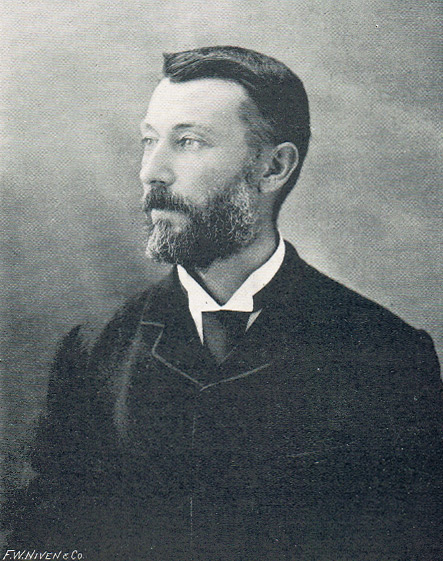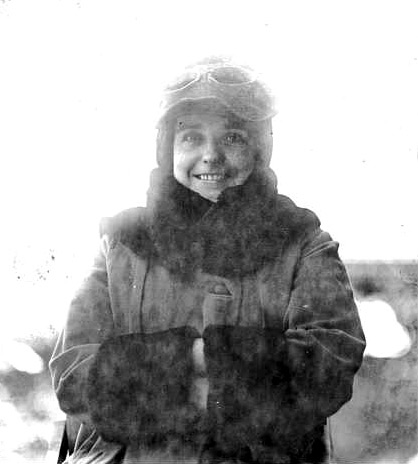Deborah Vernon Hackett
Deborah Vernon Hackett was born Deborah Drake-Brockman on 18 June 1887 at West Guildford in Western Australia. Her father, Frederick Drake-Brockman was a respected surveyor, while her mother Grace, had become famous for her part in the rescue of shipwrecked passengers when she was only sixteen. Celebrated as a local heroine, she became known as 'the Grace Darling of Western Australia’.
Deborah inherited her mother’s spirit for adventure and spent much of her youth exploring the bush. She attended Guildford Grammar School for boys, along with her four siblings, and was exceptional for her keen intelligence and quick wit.
At seventeen, Deborah married fifty-seven year-old newspaper magnate, Sir John Winthrop Hackett. Their wedding took place in a small church built by her pioneering grandfather, Alfred Bussell, and was the same place her grandparents and parents had exchanged their wedding vows.
The couple had four sons and a daughter, but their union was cut short when Hackett died just ten years into the marriage. Lady Hackett expressed her great respect for her late husband when she said:
He was a truly great man. As a girl I had a wonderful guide and philosopher in Sir Winthrop.
The Australian Household Guide was republished in 1940 as Lady Hackett's Household Guide to raise money for the Australian Red Cross war effort. The charity edition was a huge success, raising the significant sum of $10,000.
In 1916, Deborah Hackett published the popular Australian Household Guide, a 1,136-page book of recipes, health advice and household hints. As a mother of five and popular society hostess, she had become something of an authority figure on all things domestic. The book included chapters such as Backyard Poultry Keeping and What Young People Should Know. In the preface she writes,
Of the making of cookery books, there is literally no end. They fall from the press thick as autumn leaves ... The present work however is not merely a cookery book but a book on household management.
On 10 April 1918, Lady Hackett married the Adelaide barrister, Frank Beaumont Moulden. When he was elected Lord Mayor in 1920, the ‘lady mayoress’ worked tirelessly with local welfare groups and helped raise significant funds. Over these two years, she also re-established the South Australian branch of the National Council of Women and took a leading role in the Girl Guides' Association.
With characteristic independence, Lady Moulden (the title she used following her husband’s knighthood) set out to explore the possibility of mining rare minerals in Western Australia and the Northern Territory. Pouring a large part of her inheritance into this new investment, the risks paid off when her mine at Wodgina became the richest source of tantalum in the world. In 1931 Lady Moulden transferred her mineral interests to Tantalite Ltd, a new company in which she later served as Chairman of Directors.
In 1932, Moulden received an Honorary Doctorate of Laws from the University of Western Australia in acknowledgement of her first husband’s generous bequest. The timing, however, was unfortunate as her second husband had only recently passed away and she was unable to attend the official ceremony.
In World War II the tantalum from Lady Moulden’s Wodgina mine was used to develop new radar technologies.
Following the death of Sir Frank, Lady Moulden married the Melbourne barrister, Basil Buller-Murphy. Surrendering her hold on the title of ‘Lady’ by remarrying, she quickly assumed the title of ‘Dr’ (thanks to her Honorary Doctorate) and enjoyed the social opportunities this new title made available.
During World War II, Dr Buller-Murphy continued fundraising in Melbourne where she worked with the hospital auxiliaries and served on a number of welfare committees. Never one to stand back, it is said that she personally contributed more than 5000lb (over 2200kgs!) of jam and chutney to a single charity. Through her energy and commitment, she inspired great admiration and respect from those around her.
After the war, Dr Buller-Murphy left her Toorak home and moved to an orchard property named ‘Lordello’ at Kilsyth in the Dandenong Ranges. When asked why she had decided to leave the city she replied, 'It doesn't matter where you live, it's the way you make your home.'
With the aim of writing a new book, Buller-Murphy returned to her father’s research on the language and customs of the Dordenup tribe of southwest Australia. In 1958, she published An attempt to eat the moon, a book of fifteen Aboriginal legends accompanied by illustrations by Elizabeth Durack.
After a full and active life dedicated to exploration, education and social welfare, Dr Buller Murphy died at her home in Kilsyth In April 1965. She was buried alongside her parents at Karrakatta Cemetery, Perth.



